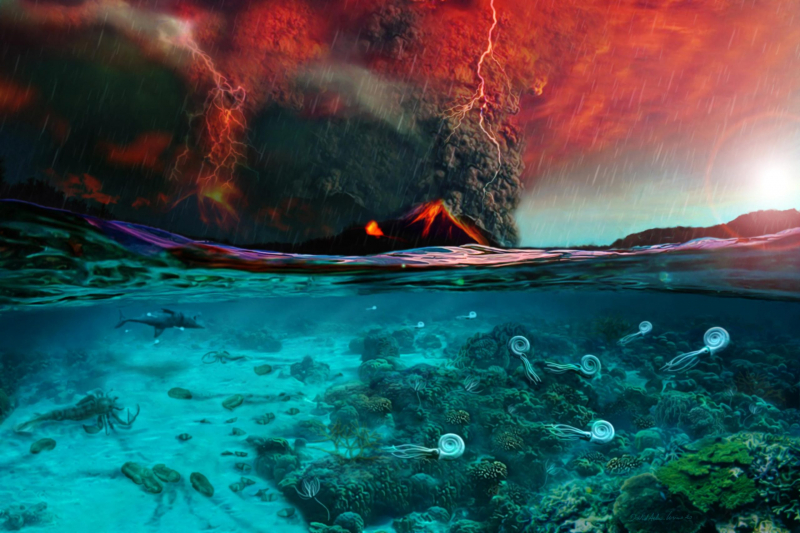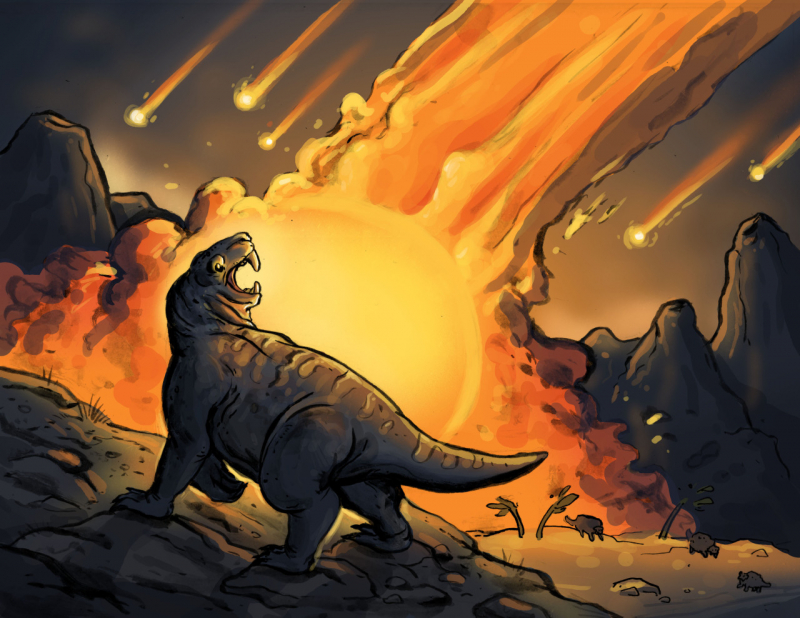Permian-Triassic extinction

The Permian-Triassic extinction event, also known as the Latest Permian extinction event, the End-Permian Extinction, and colloquially as the Great Dying, occurred approximately 251.9 million years ago and marked the boundary between the Permian and Triassic geologic periods, as well as the Paleozoic and Mesozoic eras. With the loss of 57% of biological groups, 83% of genera, 81% of marine species, and 70% of terrestrial vertebrate species, it is the Earth's most catastrophic known extinction event. It was the greatest known insect mass extinction.
There is evidence for one to three separate extinction pulses or stages. The major reason of extinction, according to scientists, was the massive amount of carbon dioxide generated by the volcanic eruptions that formed the Siberian Traps, which raised world temperatures and caused widespread anoxia and acidity in the seas. Contributing variables include the thermal degradation of hydrocarbon reserves, including oil and coal, initiated by the eruptions, as well as methane releases by unique methanogenic microbes, perhaps nourished by minerals distributed in the eruptions.
Studies in Bear Lake County, near Paris, Idaho, and nearby sites in Idaho and Nevada revealed a relatively quick rebound in a localized Early Triassic marine ecosystem, taking around 3 million years to recover, whereas an unusually diverse and complex ichnobiota is known from Italy less than a million years after the end-Permian extinction, implying that the impact of the extinction was felt less severely in some areas than others. Differential environmental stress and instability after the extinction event have been proposed as explanations for the disparities in the rate of biotic rebound between various areas and habitats.







